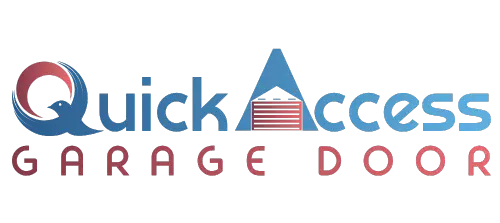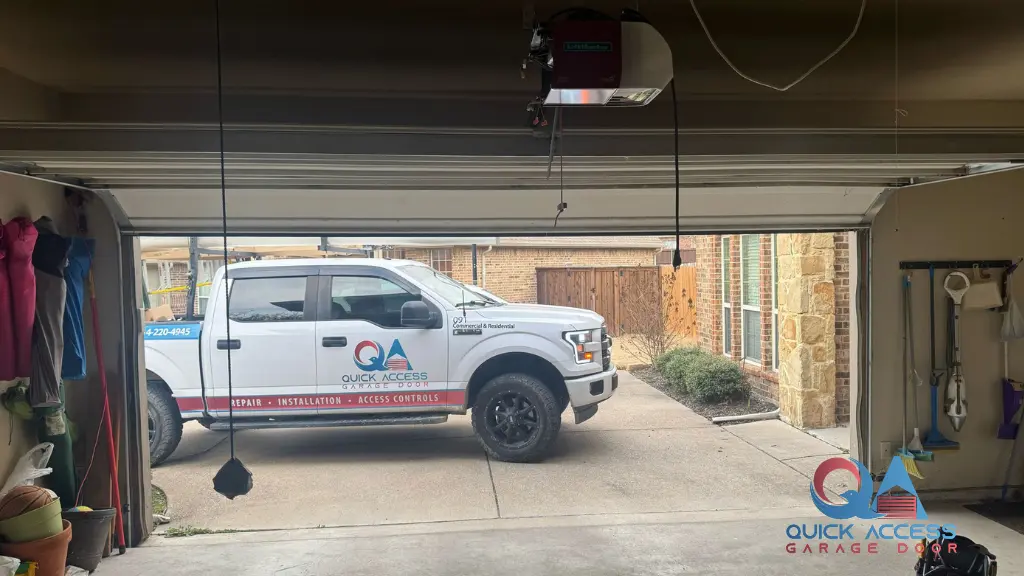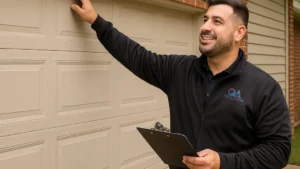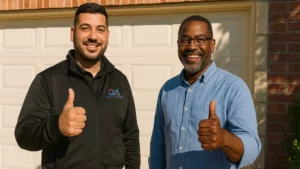Amazing Fixes for Common Garage Door Problems and How to Fix Them
Experiencing common garage door problems? You’re definitely not alone. That large, heavy door is arguably the biggest moving part of your home, and like any complex mechanism, it can encounter issues. From frustrating noises that wake the neighbors to a door that stubbornly refuses to open or close, these malfunctions can disrupt your routine and even pose safety risks. Dealing with common garage door problems is often a major headache for homeowners in Dallas.
But don’t despair! Many common garage door problems have identifiable causes and potential solutions, ranging from simple DIY adjustments to tasks best left to professionals. Understanding these issues is the first step toward getting your garage door back in smooth working order. This guide will walk you through some of the most frequent common garage door problems homeowners face and provide amazing fixes and insights on how to address them safely and effectively. We’ll cover troubleshooting steps, essential maintenance, and crucial advice on when it’s time to call in the experts, like our team at Quick Access Garage Door Repair.
Problem 1: The Annoyingly Noisy Garage Door
Is your garage door announcing its arrival or departure with a symphony of screeches, squeaks, bangs, or grinding sounds? This is one of the most common garage door problems, and while often just an annoyance, it can sometimes signal underlying issues needing attention. Ignoring persistent noise could lead to more significant failures down the road.
Potential Causes:
- Lack of Lubrication: Metal parts like rollers, hinges, and springs need regular lubrication to move smoothly.
- Worn Rollers: Metal or nylon rollers can wear out, wobble in the tracks, or lose bearings, causing rattling or grinding.
- Loose Hardware: Nuts, bolts, and screws on the door and tracks can loosen over time due to vibrations, leading to rattling.
- Opener Issues: The chain or belt drive in the opener might need adjustment or lubrication. The motor itself could be struggling.
- Bent Tracks: Even minor bends in the vertical or horizontal tracks can cause rollers to bind and make noise.
Amazing Fixes:
- Lubrication: Apply a silicone-based or lithium grease lubricant specifically designed for garage doors to hinges, rollers (avoiding flat nylon surfaces), springs, and track surfaces. Wipe away excess. Popular Mechanics suggests focusing on metal-on-metal contact points.
- Tighten Hardware: Use a socket wrench to gently tighten all nuts and bolts on the door sections and track brackets. Don’t overtighten.
- Inspect and Replace Rollers: Check rollers for wear, cracks, or wobbling. Replacing worn metal rollers with nylon ones can significantly reduce noise. This is often a manageable DIY task if done carefully, one roller at a time with the door down.
- Check Tracks: Look for obvious bends or damage. Minor dents might be gently corrected, but significant bends require professional attention. Ensure tracks are clean.
- Opener Maintenance: Consult your opener’s manual for specific lubrication points (usually the rail).
When to Call a Pro: If lubrication and tightening don’t solve the noise, or if you suspect bent tracks or issues inside the opener motor, it’s time to call Quick Access Garage Door Repair. Persistent grinding or banging could indicate serious common garage door problems brewing.
Problem 2: The Stubborn Door – Won’t Open or Close Properly
Perhaps the most disruptive of common garage door problems is when the door refuses to open when you need to leave or won’t close, leaving your home vulnerable. This issue can stem from various causes, related to power, sensors, the opener, or the door mechanism itself.
Potential Causes:
- Power Issues: The opener might be unplugged, or a circuit breaker could have tripped.
- Remote/Wall Switch Malfunction: Dead batteries in the remote, or issues with the wall switch wiring.
- Safety Sensor Obstruction/Misalignment: These sensors near the bottom of the tracks must ‘see’ each other. Obstructions or misalignment will prevent the door from closing. Bob Vila highlights this as a very frequent culprit for doors not closing.
- Disconnected Opener Trolley: The emergency release cord may have been pulled, disconnecting the door from the opener mechanism.
- Limit Settings Incorrect: The opener’s travel limit settings might be off, causing it to stop too soon or reverse.
- Binding or Obstruction: Something physically blocking the door’s path, or the door itself binding in the tracks.
- Broken Springs: Torsion or extension springs counterbalance the door’s weight. If broken, the opener likely cannot lift the heavy door. This is a serious issue.
- Broken Cables: Cables work with the springs to lift the door. A broken cable can cause the door to hang crooked or not move.
Amazing Fixes & Troubleshooting:
- Check Power: Ensure the opener is plugged in. Check your circuit breaker box.
- Test Remotes/Switch: Try a different remote or the wired wall switch. Replace remote batteries.
- Inspect Safety Sensors: Look for anything blocking the sensors’ path (broom, box, etc.). Check if the small LED lights on the sensors are lit steadily (usually green). If blinking or off, they may be misaligned. Gently adjust them until the lights are solid. Clean the sensor lenses.
- Check Emergency Release: Look for the red cord hanging from the opener rail. If it’s been pulled, you may need to re-engage the trolley (consult your manual, usually involves running the opener until it reconnects).
- Look for Obstructions: Visually inspect the door’s path and tracks for any blockages.
- Manual Operation Test: If safe, pull the emergency release cord (with the door closed if possible) and try lifting the door manually. It should lift relatively smoothly and hold its position partway up. If it’s extremely heavy, slams down, or is difficult to move, suspect spring or cable issues – DO NOT force it.
- Adjust Limits (Refer to Manual): If the door stops partway or reverses immediately after hitting the floor, the limits might need adjustment. Follow your specific opener manual’s instructions carefully.
When to Call a Pro: If the door is very heavy manually, if you suspect broken springs or cables (often accompanied by a loud bang), if you see frayed or broken cables, or if troubleshooting doesn’t resolve the issue, contact Quick Access Garage Door Repair immediately. These are potentially dangerous common garage door problems.
Problem 3: Garage Door Opener Acting Strange
Sometimes the door itself seems okay, but the opener – the motorized unit – behaves erratically. This includes running without moving the door, making humming noises, or reversing unexpectedly (beyond sensor issues). Addressing these common garage door problems often involves checking the opener’s settings or internal components.
Potential Causes:
- Opener Disengaged: As mentioned before, the emergency release might be pulled.
- Stripped Gears: Internal plastic or metal gears within the opener motor can wear out or strip, causing the motor to run but not drive the chain/belt.
- Faulty Logic Board: The circuit board controlling the opener’s functions can fail due to power surges or age.
- Incorrect Force Settings: Openers have settings for the amount of force needed to open/close. If set too low, minor resistance might cause it to stop or reverse.
- Overheating Motor: If the opener runs repeatedly or struggles, the motor might overheat and temporarily shut down.
- Remote Interference: Rare, but other radio signals could potentially interfere with your remote’s signal.
Amazing Fixes & Troubleshooting:
- Check Engagement: Ensure the trolley is engaged with the chain or belt mechanism.
- Listen Carefully: Does the motor hum but nothing moves? This could indicate stripped gears or an obstruction the opener can’t overcome.
- Reset Power: Try unplugging the opener for a minute and plugging it back in to reset the logic board.
- Adjust Force Settings (Refer to Manual): Consult your manual to locate and adjust the open/close force settings. Increase slightly if the door stops unnecessarily, but avoid setting it too high, which can be a safety hazard.
- Check for Overheating: If the opener stops working after use, let it cool down for 15-20 minutes and try again.
- Reprogram Remotes: If remotes are unresponsive or acting weirdly, try reprogramming them according to the manual.
- Consult Opener Guide: Lowe’s offers a guide specific to opener troubleshooting that might cover model-specific issues.
When to Call a Pro: If you suspect stripped gears (motor runs, door doesn’t move), a faulty logic board (erratic behavior persists after reset), or if you’re uncomfortable adjusting internal settings, professional help is needed. Opener repair often requires specific parts and expertise. Dealing with these electrical common garage door problems requires care.
Problem 4: The Door is Off Its Tracks
A garage door coming off its tracks – meaning one or more rollers have popped out of the vertical or horizontal tracks – is a serious and dangerous situation. The door might hang precariously, look crooked, and be completely jammed. This is one of the common garage door problems that absolutely demands caution.
Potential Causes:
- Impact: Hitting the door with a car is a common cause. Even a minor bump can knock rollers out.
- Damaged or Bent Tracks: Severely bent or damaged vertical tracks can allow rollers to slip out.
- Broken Lift Cable: One of the lift cables snapping can cause the door to become uneven, putting immense stress on the rollers and tracks on one side, potentially forcing rollers out.
- Extremely Worn Rollers: Very old or damaged rollers might ‘jump’ the track under stress.
What NOT To Do:
- DO NOT operate the garage door opener. This can cause further damage or a catastrophic failure.
- DO NOT try to force the door open or closed. The door is unstable and could fall.
- DO NOT attempt to put the rollers back in the track yourself unless you have significant experience. The door is under tension and can move unexpectedly.
The ONLY Safe Fix:
Call a Professional Immediately: This situation requires expert handling. A technician from Quick Access Garage Door Repair has the tools and knowledge to safely secure the door, identify the root cause (impact, bent track, broken cable), make necessary repairs, and correctly reset the rollers in the tracks. Attempting this yourself poses a high risk of injury and further damage to the door system. Addressing off-track common garage door problems is not a DIY job.
As Thomas Edison wisely said, “Opportunity is missed by most people because it is dressed in overalls and looks like work.” While DIY can be rewarding, recognizing when a job requires professional skill is crucial for safety and success, especially with severe common garage door problems.
Quick Check Infochart for Common Garage Door Problems
Sources: Insights derived from Family Handyman and Angi guides on garage door fixes.
Problem 5: The Danger Zone – Broken Springs or Cables
Among the most critical and potentially dangerous common garage door problems are issues with the springs and cables. These components are under extreme tension to counterbalance the door’s weight (which can be hundreds of pounds). A failure here is not just inconvenient; it’s a serious safety hazard.
Understanding Springs and Cables:
- Torsion Springs: Usually located on a metal shaft directly above the garage door opening. They wind and unwind to lift the door. Most residential doors have one or two.
- Extension Springs: Found running along the sides of the upper tracks (parallel to the ceiling). They stretch and retract. Often have safety cables running through them.
- Lift Cables: Connected to the bottom brackets of the door and wind around drums (torsion system) or attach to pulleys (extension system), working with the springs to lift evenly.
Signs of Broken Springs or Cables:
- Loud Bang: A broken torsion spring often releases tension with a startlingly loud noise.
- Door Won’t Open: The opener may strain but be unable to lift the door’s full weight.
- Door Opens Crookedly or Gets Stuck: A broken cable on one side causes uneven lifting.
- Visible Gap in Torsion Spring: If you look at the spring above the door, a break will often show as a noticeable gap (usually 2-3 inches) in the coils.
- Loose or Dangling Cables: Cables should be taut when the door is closed.
- Door Falls Rapidly: If the door slams down when manually released, the springs are likely broken or severely worn.
- Extension Spring Safety Cable is Doing its Job: If an extension spring breaks, the safety cable running through it prevents it from flying dangerously across the garage. You might see a dangling, broken spring held by the cable.
Why This is NOT a DIY Fix:
Replacing garage door springs (torsion or extension) or cables is extremely hazardous. The tension involved can cause severe injury or even death if handled improperly. Special tools and precise procedures are required. There’s a reason why even comprehensive guides like those from This Old House focus on maintenance rather than spring replacement for homeowners.
When You Suspect Spring or Cable Issues:
- STOP using the door immediately. Do not try to operate it electronically or manually.
- Keep people and pets away from the door area.
- Call Quick Access Garage Door Repair right away. We specialize in safely handling these high-tension components and getting your door operational again. Tackling these specific common garage door problems requires professional expertise.
Problem 6: Damaged or Unsightly Garage Door Panels
While often more of a cosmetic issue initially, damaged garage door panels (the individual horizontal sections) can affect the door’s structural integrity, insulation, and smooth operation over time. Dents, cracks, warping, or rot are common garage door problems, especially in older doors or after impacts.
Causes of Panel Damage:
- Impacts: Cars backing into the door, stray basketballs, lawnmower debris.
- Weather Exposure: Sun, rain, and temperature fluctuations can cause warping, fading, cracking (especially in wood doors), or rust (in steel doors).
- Age and Wear: Materials degrade over time. Wood can rot, metal can rust, insulation can deteriorate.
- Stress from Other Issues: An improperly balanced door or malfunctioning hardware can put extra stress on panels.
Fixing Damaged Panels:
- Minor Dents (Metal Doors): Sometimes small dents can be gently pushed out from the inside, or cosmetic fixes applied.
- Cracks/Rot (Wood Doors): Small cracks might be filled and sanded, but significant rot often compromises the panel.
- Panel Replacement: For significant damage (large dents, cracks, warping, rot), replacing the affected panel(s) is often the best solution. This involves sourcing an exact match (make, model, color, size) and carefully installing it.
- Full Door Replacement: If multiple panels are damaged, the door is very old, or matching panels are unavailable, replacing the entire garage door might be more cost-effective and provide better long-term value.
Professional Panel Replacement: While replacing a single panel seems straightforward, it involves unbolting sections, potentially dealing with tension if it’s a bottom panel near the cables, and ensuring proper alignment. It’s often best handled by professionals.
When to Call Quick Access Garage Door Repair for Panel Issues:
- If a panel is significantly cracked, bent, warped, or rotted.
- If the damage seems to be affecting the door’s movement or sealing.
- If you need help sourcing a matching replacement panel.
- If you prefer a professional installation for safety and proper alignment.
Addressing panel-related common garage door problems can improve curb appeal and maintain your door’s function.
The Power of Prevention: Essential Garage Door Maintenance
Many common garage door problems can be prevented or caught early with regular maintenance. Just like any complex machine, your garage door system benefits immensely from routine checks and care. Investing a small amount of time periodically can save you from costly emergency repairs and ensure safer, more reliable operation.
Benjamin Franklin famously stated, “An ounce of prevention is worth a pound of cure.” This couldn’t be more true for garage doors. Regular upkeep helps identify minor issues like loose bolts or dry parts before they escalate into major failures like snapped springs or doors coming off track.
Key Maintenance Tasks (DIY Friendly):
- Visual Inspection (Monthly): Look over the springs, cables, rollers, pulleys, and mounting hardware for signs of wear, damage, or rust. Check that cables are symmetrical.
- Lubrication (Semi-Annually): As mentioned for noise issues, lubricate all moving metal parts (rollers, hinges, springs, tracks) with appropriate garage door lubricant.
- Hardware Tightening (Semi-Annually): Check and gently tighten bolts and screws on the door and track assembly.
- Balance Test (Semi-Annually): With the door closed, pull the emergency release cord. Lift the door manually about halfway up. It should stay in place without assistance. If it drifts down or flies up, the springs need professional adjustment. **Do NOT attempt to adjust springs yourself.**
- Safety Sensor Test (Monthly): With the door open, place an object like a roll of paper towels or a block of wood in the path of the sensors. Press the close button. The door should stop and reverse when it nears the object. If it doesn’t, the sensors need adjustment or repair – stop using the opener until fixed.
- Auto-Reverse Test (Monthly): Place a sturdy object like a 2×4 board flat on the ground in the door’s path. Close the door. It should reverse upon contact. If it doesn’t, the opener’s force setting may be too high or the mechanism needs adjustment (refer to manual or call a pro).
- Clean Tracks: Wipe down the tracks to remove debris that could impede roller movement.
- Check Weather Stripping: Inspect the rubber seal at the bottom of the door. If cracked or worn, replace it to keep out elements and pests.
Consistent maintenance is key to avoiding many common garage door problems and extending the life of your system. Better Homes & Gardens emphasizes that these simple steps can prevent costly future repairs.
FAQ
Get Help Now
Hashtags
#GarageDoorRepair, #GarageDoorProblems, #GarageDoorFix, #GarageDoorMaintenance, #GarageDoorOpener, #NoisyGarageDoor, #GarageDoorStuck, #GarageDoorSafety, #DIYGarageRepair, #HomeRepair, #HomeMaintenanceTips, #HomeImprovement, #HoustonHomeRepair
Outbound Links:
Always prioritize safety when working on your garage door. Consult official garage door safety guidelines before starting.
If you have a specific opener model, you can often find manuals on the manufacturer’s website, such as Chamberlain, LiftMaster, or Genie.
For complex or dangerous repairs, it’s best to contact a professional. You can find a certified garage door technician through the International Door Association (IDA).
Understanding how components like photo-eye sensors work can help with troubleshooting.





